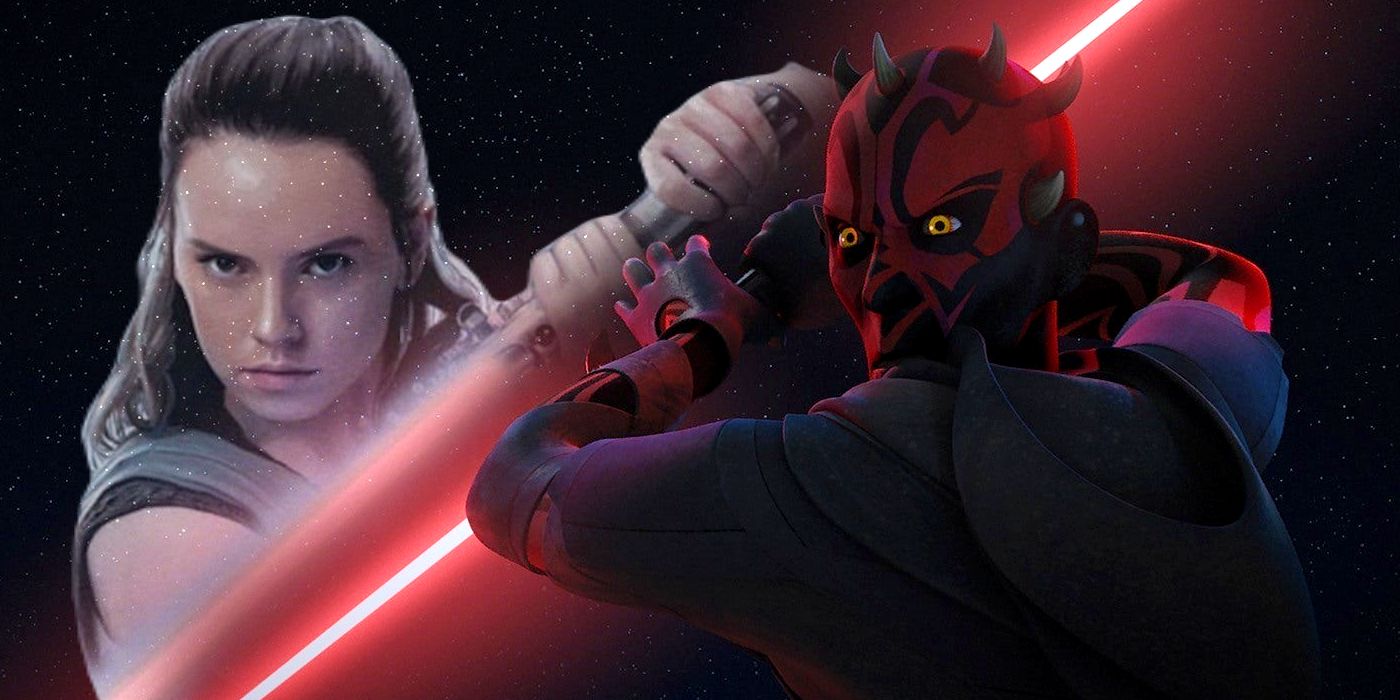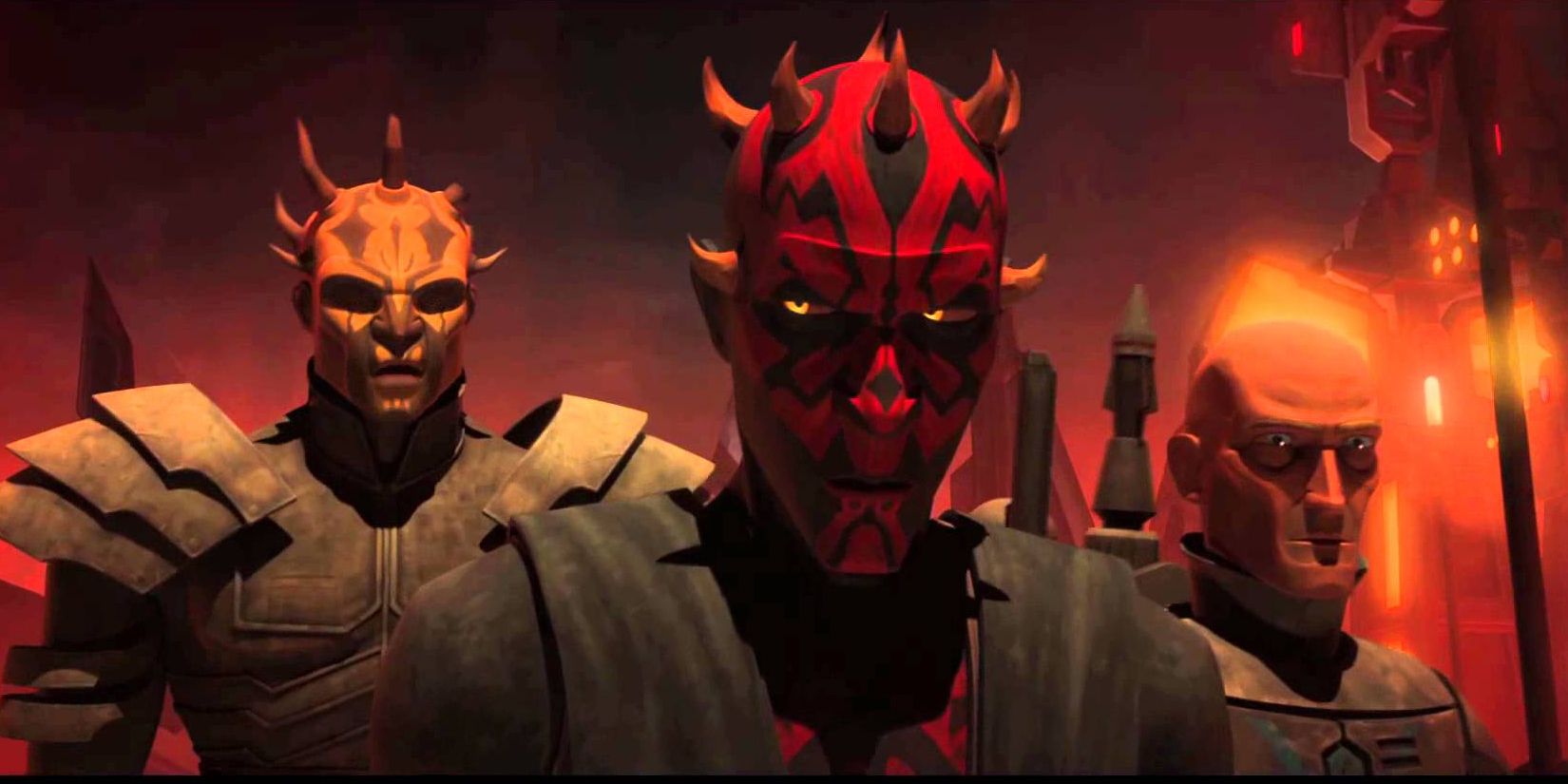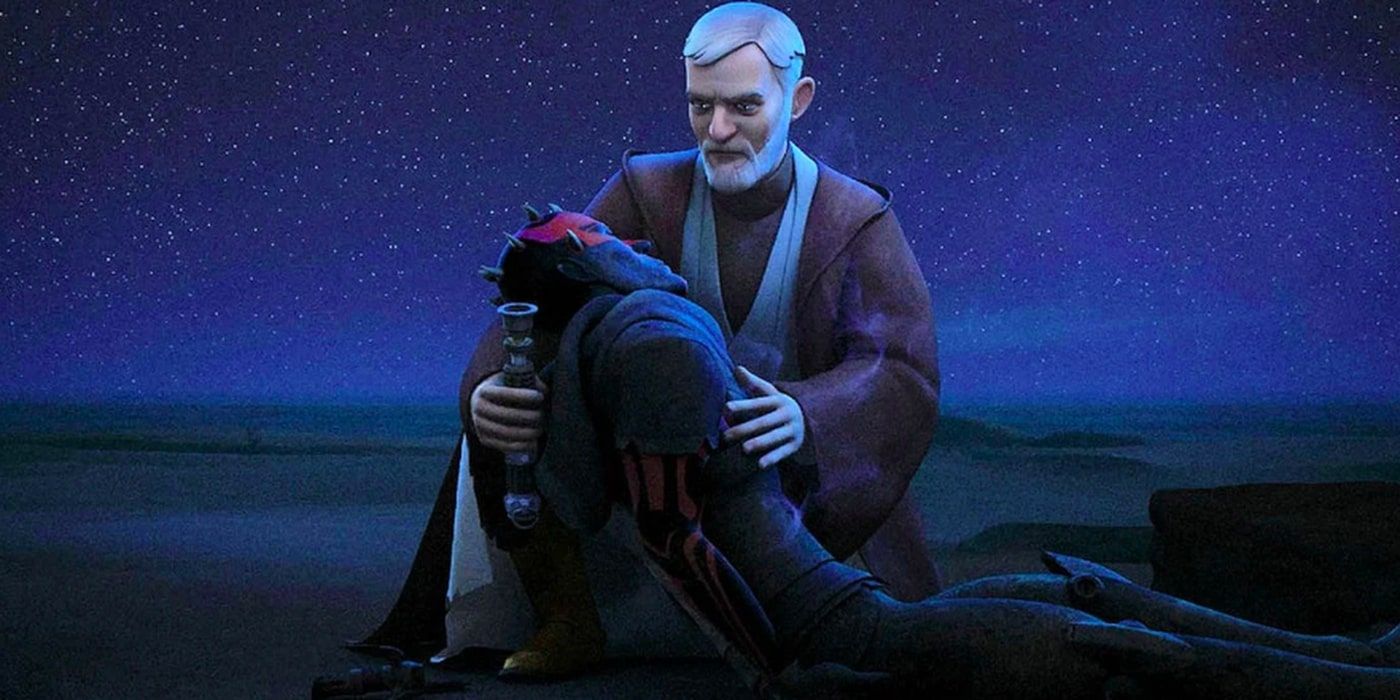When Disney acquired Lucasfilm in 2012, the studio quickly began work on the Star Wars sequel trilogy. Infamously, George Lucas had sold his own treatment for the sequel trilogy along with his company, but Disney ultimately decided to go in a different direction. Lucas' story was abandoned, but the seeds of his idea remained scattered throughout the Star Wars universe. Star Wars Rebels eventually brought those dangling plot threads to a close.
Lucas' original plan for the Star Wars sequels revolved around a conflict between the burgeoning New Republic and the criminal syndicate run by former Sith Lord Darth Maul. While Maul's control over the galaxy's criminal underworld was established throughout The Clone Wars, in Star Wars Rebels, Maul finally met his demise at the hands of Obi-Wan Kenobi. Interestingly though, Obi-Wan appeared to be aware of how his fight with Maul reshaped the galaxy's future, meaning this confrontation was when George Lucas' original sequel trilogy storyline was killed in-universe.
Darth Maul's Path to the Star Wars Sequel Trilogy
After it was revealed in The Clone Wars that Maul had survived his duel with Obi-Wan Kenobi in The Phantom Menace, the Sith Lord soon reverted to his old training and began building his power base. While Darth Sidious was tightening his hold over the galaxy in the political arena, Maul turned to the underworld and began bringing various crime lords under his control. Had George Lucas' plan for the Star Wars sequels been realized, Maul's Shadow Collective would have risen to prominence following the fall of the Empire, seizing upon the chaos created by the power vacuum.
Disney's decision to take the Star Wars sequel trilogy in a different direction meant Maul's criminal empire never rose to power, and the character's post-Clone Wars fate became ambiguous. Season 3 of Star Wars Rebels saw Maul's story conclude when he tricked Jedi Padawan Ezra Bridger into leading him to Obi-Wan Kenobi. This resulted in Obi-Wan killing Maul, but before the two dueled, the old Jedi Master tells Ezra that Maul's plan has "altered the course of many things." This might suggest Obi-Wan has sensed the possible future in which Maul would rise to power and has foreseen their encounter on Tatooine, preventing that future from ever coming to pass.
Darth Maul's Death Reshaped the Future of the Star Wars Galaxy
From a real-world perspective, Maul's death in Star Wars Rebels served as a way of concluding the character's story after plans to utilize him as the villain of the sequel trilogy were abandoned by Disney. However, Obi-Wan's remark that Maul had "altered the course of many things" suggests that, from an in-universe perspective, this was the moment in which Maul's Shadow Collective was prevented from ever returning to power. Had Maul not been consumed by his need for revenge, he may have become the new Dark Lord of the Sith.
Lucas' sequel trilogy would reportedly have seen Maul training an apprentice, Darth Talon, and would have made Leia the Chosen One. Such a storyline would have brought a fresh status quo and a new brand of conflict to the Star Wars galaxy, whereas Disney's sequels recreated the Rebels versus the Empire dynamic of the original trilogy. Lucas' pitch would have seen struggling heroes and shadowy villains on an equal footing. Although this trilogy would have explored exciting new territory for the Star Wars saga, Maul's death in the arms of Obi-Wan Kenobi is an incredibly powerful ending for the character.



